Heart Regeneration

Heart Regeneration
If a person suffers a heart attack and survives, chances are their heart muscle will never be quite the same. Indeed, the associated scarring often results in permanent damage that can lead to heart failure and eventual death. Scientists are therefore searching for possible ways to promote regeneration of damaged hearts, and it’s possible that newborn mice may hold the answer. For a few weeks after birth, these animals can almost entirely regenerate their heart tissue after an injury. And new research suggests a key process that may be critical for this regenerative ability: regrowth of nerves. Blocking nerve growth specifically in experimental animals completely prevented the regrowth of damaged heart tissue. In control animals, the nerves regrew into their normal branching patterns—like those pictured. Thus if researchers are to have any hope of regenerating adult hearts after injury, their best bet might be to boost accompanying nerve growth.
Written by Ruth Williams
Image from work by Ian A. White and colleagues
Interdisciplinary Stem Cell Institute, University of Miami Miller School of Medicine, USA
Image copyright held by the American Heart Association
Published in Circulation Research, December 2015
You can also follow BPoD on Twitter and Facebook
More Posts from Contradictiontonature and Others


Scientists are pretty sure that deep inside the moon, there’s water
While Earth’s surface cracks and spouts fire, the moon’s surface, for as long as we’ve known it, has been quiet.
The youngest sign of volcanic activity scientists have found on the moon’s surface is 18 million years old.
But the traces of that long-ago volcanic activity could help scientists crack an enduring mystery: How much water is on the moon?
A study published Monday in Nature Geoscience suggests it may be more than we thought. Read more (7/24/17)
follow @the-future-now

In the Alice in Wonderland world of the atomically small, things can be in two places at once, merely looking at a particle can alter a twin on the other side of the universe apparently instantaneously, and theoretical cats can be both alive and dead.
Certainty is also somehow replaced by chance, an idea that once moved a somewhat vexed Albert Einstein to famously say: “God doesn’t play dice with the universe.”
Such strange, almost magical effects have always been confined to the world of photons and atoms – until now.
In the journal Nature, scientists at the US National Institute of Standards and Technology (NIST) in Colorado reported the first “glimpses” of quantum effects, as they are known, happening on a scale just large enough to be seen by the human eye.
It is a breakthrough that could have significant implications for attempts to create quantum computers that are many millions of times faster than the current machines.
One of the researchers, Dr John Teufel, told the Independent: “I think we’re in an extremely exciting time where this technology we have available gives us access to things people have been talking about as thought experiments for decades.
“Just now what’s exciting is we can go into the laboratory and actually witness these quantum effects.”
Continue Reading.

At last, we’ve seen what might be the primary building blocks of memories lighting up in the brains of mice.
We have cells in our brains – and so do rodents – that keep track of our location and the distances we’ve travelled. These neurons are also known to fire in sequence when a rat is resting, as if the animal is mentally retracing its path – a process that probably helps memories form, says Rosa Cossart at the Institut de Neurobiologie de la Méditerranée in Marseille, France.
But without a way of mapping the activity of a large number of these individual neurons, the pattern that these replaying neurons form in the brain has been unclear. Researchers have suspected for decades that the cells might fire together in small groups, but nobody could really look at them, says Cossart.
To get a look, Cossart and her team added a fluorescent protein to the neurons of four mice. This protein fluoresces the most when calcium ions flood into a cell – a sign that a neuron is actively firing. The team used this fluorescence to map neuron activity much more widely than previous techniques, using implanted electrodes, have been able to do.
Observing the activity of more than 1000 neurons per mouse, the team watched what happened when mice walked on a treadmill or stood still.
As expected, when the mice were running, the neurons that trace how far the animal has travelled fired in a sequential pattern, keeping track.
These same cells also lit up while the mice were resting, but in a strange pattern. As they reflected on their memories, the neurons fired in the same sequence as they had when the animals were running, but much faster. And rather than firing in turn individually, they fired together in sequential blocks that corresponded to particular fragments of a mouse’s run.
“We’ve been able to image the individual building-blocks of memory,” Cossart says, each one reflecting a chunk of the original episode that the mouse experienced.
Continue Reading.
Dive deep into Episode 05 of #ShelfLife to discover the various technologies that have helped humans map the sky around us for eons.

From sundials to mega-powered modern telescopes, tools for stargazing allow us to understand the universe—and our place within it. Season 2 begins on November 1.

Organic Chemistry, Part 2/6
Reaction Mechanisms: Electrophilic addition to double bonds, SN2, SN1, E1, E2, and the decision tree







Next week: EAS, NAS, pericyclic reactions, Claisen rearrangements, and radical reactions!
Part 1






Dancing Flames - Aluminium’s reactivity
aluminium’s protective oxide layer can make it difficult to see its true reactivity in the context of metals reacting with aqueous solutions. (Do not try to recreate experiment without the presence of a trained professional)
Procedure:
Dissolve copper(II) chloride in the hydrochloric acid and set the solution aside. Take a piece of aluminium foil approximately the width of the base of the conical flask and approximately 20 cm long. Roll it loosely just enough to be able to fit through the neck of the flask – use a splint or spatula to gently push it home so it lies on its side on the base of the flask. Have a source of ignition nearby with some splints. Pour the solution inside the flask and swirl the flask gently to get the reaction going.
After a few seconds, the mixture will begin to react vigorously and produce hydrogen gas. Hold the lit splint by the opening of the flask and the gas will ignite. If you have timed it right, the flame will sink back into the flask and dance inside above the reaction with an eerie green color from the copper.
Reaction:
2Al(s) + 3CuCl2(aq) → 2AlCl3(aq) + 3Cu(s)
2Al(s) + 6HCl(aq) → 2AlCl3(aq) + 3H2(g)
The primary objective here is to show how reactive aluminium is. The aluminium oxide layer protects the metal beneath from further reaction with air, water or acid. But chloride ions can ligate aluminium ions at the metal–oxide interface and break down the protective layer, allowing the reaction to proceed. -rsc
Giffed by: rudescience From: This video
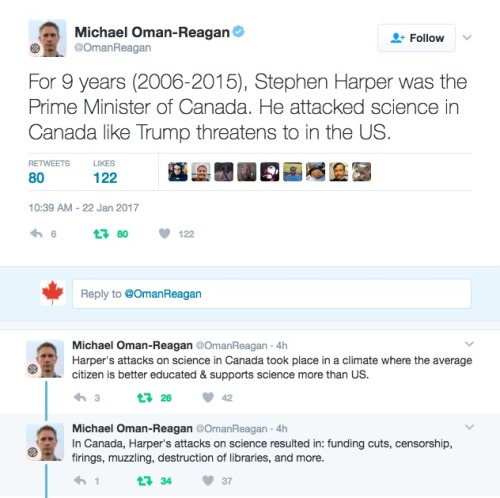
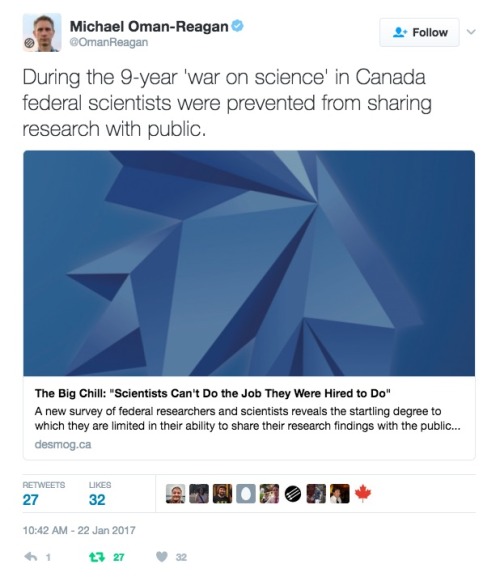
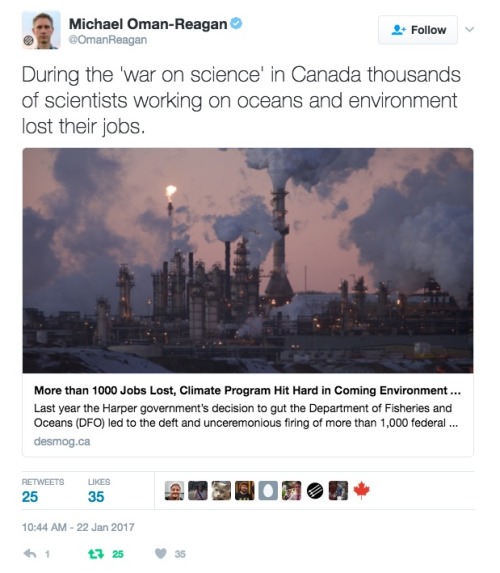
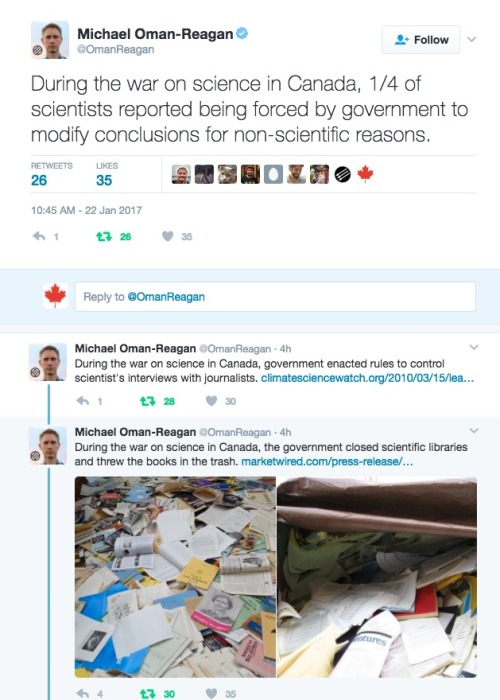
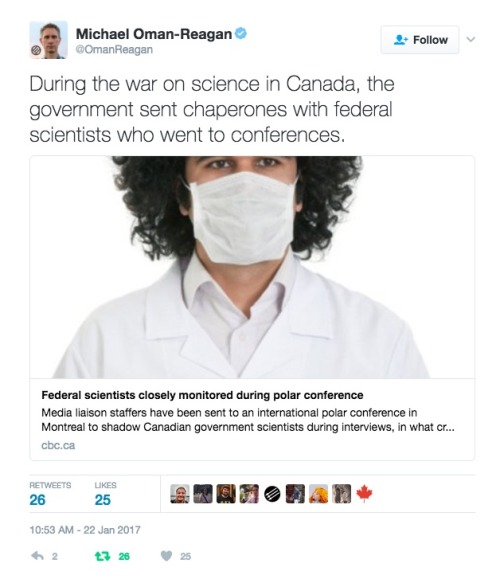

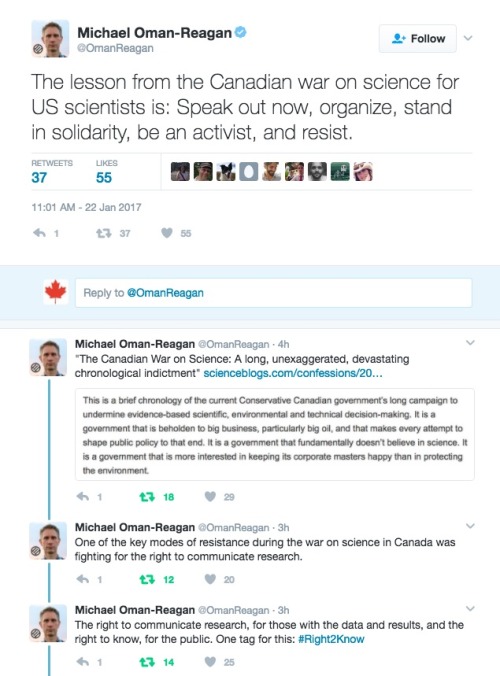
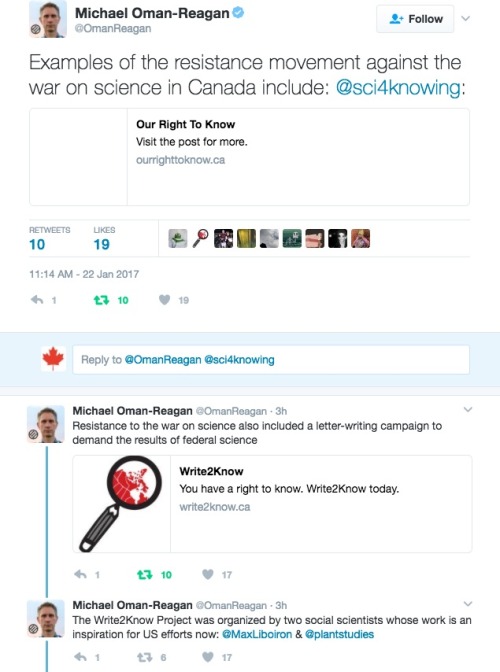

A required read from Michael Oman-Reagan.
This is all true. This all happened in Canada, and its very likely it will happen in the USA under Trump and be worse than Harper’s crackdown on Science ever was.
Links cited in this twitter essay:
The Big Chill: “Scientists Can’t Do the Job They Were Hired to Do”
More than 1000 Jobs Lost, Climate Program Hit Hard in Coming Environment Canada Cuts
Harper Government Trashes Another Federal Science Library
Federal scientists closely monitored during polar conference
Science Silenced: US Scientist Caught in Canadian Muzzle Climate-change scientists feel ‘muzzled’ by Ottawa: Documents
The Canadian War on Science: A long, unexaggerated, devastating chronological indictment
http://ourrighttoknow.ca/
http://write2know.ca/
https://evidencefordemocracy.ca
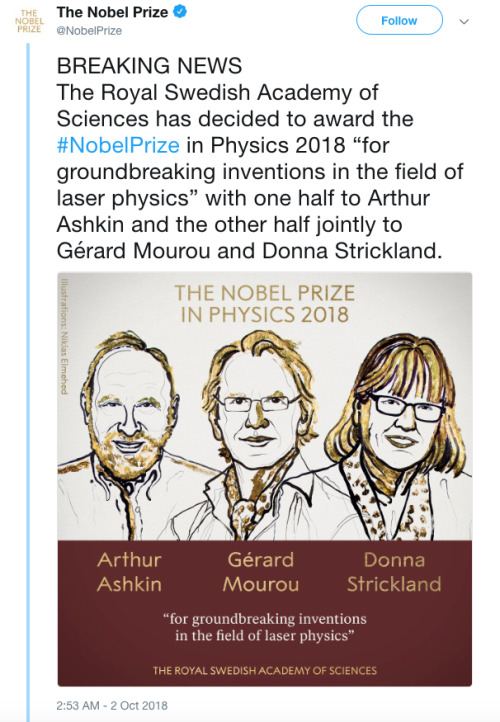
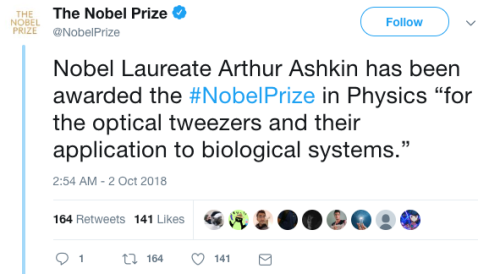
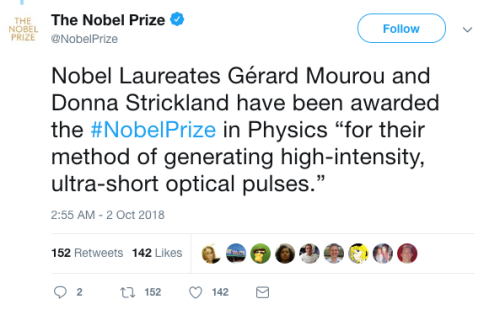
Breaking News:
The Nobel Prize in Physics for 2018 has been awarded to Arthur Ashkin, Gerard Mourou and Donna Strickland “for groundbreaking inventions in the field of laser physics”.
Donna Strickland is the first woman to win the Nobel Prize in Physics in 55 years.
Nobel Laureate Arthur Ashkin has been awarded the #NobelPrize in Physics “for the optical tweezers and their application to biological systems.”
Nobel Laureates Gérard Mourou and Donna Strickland have been awarded the #NobelPrize in Physics “for their method of generating high-intensity, ultra-short optical pulses.”
Article here with more information about their work:
Arthur Ashkin, Gérard Mourou and Donna Strickland win Nobel physics prize
If it is just us, seems like an awful waste of space.
Carl Sagan (from Contact)

-
 moods-like-the-sea reblogged this · 8 years ago
moods-like-the-sea reblogged this · 8 years ago -
 diaphonizedcadaver reblogged this · 8 years ago
diaphonizedcadaver reblogged this · 8 years ago -
 diaphonizedcadaver liked this · 8 years ago
diaphonizedcadaver liked this · 8 years ago -
 simplynonsens reblogged this · 9 years ago
simplynonsens reblogged this · 9 years ago -
 biodynamicheart reblogged this · 9 years ago
biodynamicheart reblogged this · 9 years ago -
 helladelicious liked this · 9 years ago
helladelicious liked this · 9 years ago -
 complex---simplicity reblogged this · 9 years ago
complex---simplicity reblogged this · 9 years ago -
 b4mbin4 liked this · 9 years ago
b4mbin4 liked this · 9 years ago -
 monkeysmindkey liked this · 9 years ago
monkeysmindkey liked this · 9 years ago -
 monkeysmindkey reblogged this · 9 years ago
monkeysmindkey reblogged this · 9 years ago -
 kind-hearted-rebel liked this · 9 years ago
kind-hearted-rebel liked this · 9 years ago -
 geovannyv83 liked this · 9 years ago
geovannyv83 liked this · 9 years ago -
 heburngao liked this · 9 years ago
heburngao liked this · 9 years ago -
 crimesolversherlock liked this · 9 years ago
crimesolversherlock liked this · 9 years ago -
 panda-poes reblogged this · 9 years ago
panda-poes reblogged this · 9 years ago -
 wordscaptivatethemind reblogged this · 9 years ago
wordscaptivatethemind reblogged this · 9 years ago -
 the-stray-liger liked this · 9 years ago
the-stray-liger liked this · 9 years ago -
 nuderefsarebest reblogged this · 9 years ago
nuderefsarebest reblogged this · 9 years ago -
 contradictiontonature reblogged this · 9 years ago
contradictiontonature reblogged this · 9 years ago -
 dubg888 reblogged this · 9 years ago
dubg888 reblogged this · 9 years ago -
 eddieflat liked this · 9 years ago
eddieflat liked this · 9 years ago -
 djroxthebeat reblogged this · 9 years ago
djroxthebeat reblogged this · 9 years ago -
 marynaisee-blog liked this · 9 years ago
marynaisee-blog liked this · 9 years ago -
 turgut58seker liked this · 9 years ago
turgut58seker liked this · 9 years ago -
 iliveinaparadox reblogged this · 9 years ago
iliveinaparadox reblogged this · 9 years ago -
 iliveinaparadox liked this · 9 years ago
iliveinaparadox liked this · 9 years ago -
 livingdeathgirl13 reblogged this · 9 years ago
livingdeathgirl13 reblogged this · 9 years ago -
 jackicantlift87 liked this · 9 years ago
jackicantlift87 liked this · 9 years ago -
 grinslim-blog liked this · 9 years ago
grinslim-blog liked this · 9 years ago -
 tris2k16-blog liked this · 9 years ago
tris2k16-blog liked this · 9 years ago -
 indieecisive-blog reblogged this · 9 years ago
indieecisive-blog reblogged this · 9 years ago -
 indieecisive-blog liked this · 9 years ago
indieecisive-blog liked this · 9 years ago -
 schrodingersavedme reblogged this · 9 years ago
schrodingersavedme reblogged this · 9 years ago -
 dontgetmesartred-blog liked this · 9 years ago
dontgetmesartred-blog liked this · 9 years ago -
 rinlockhart liked this · 9 years ago
rinlockhart liked this · 9 years ago -
 rahul55-blog1 reblogged this · 9 years ago
rahul55-blog1 reblogged this · 9 years ago -
 rahul55-blog1 liked this · 9 years ago
rahul55-blog1 liked this · 9 years ago -
 coolblackeye reblogged this · 9 years ago
coolblackeye reblogged this · 9 years ago -
 coolblackeye liked this · 9 years ago
coolblackeye liked this · 9 years ago
A pharmacist and a little science sideblog. "Knowledge belongs to humanity, and is the torch which illuminates the world." - Louis Pasteur
215 posts
